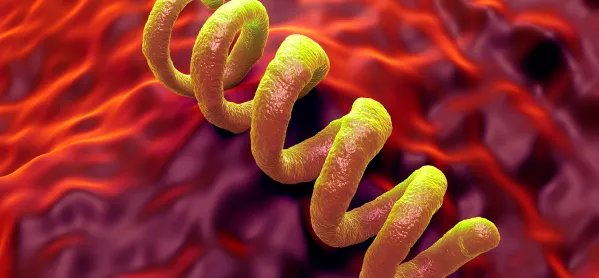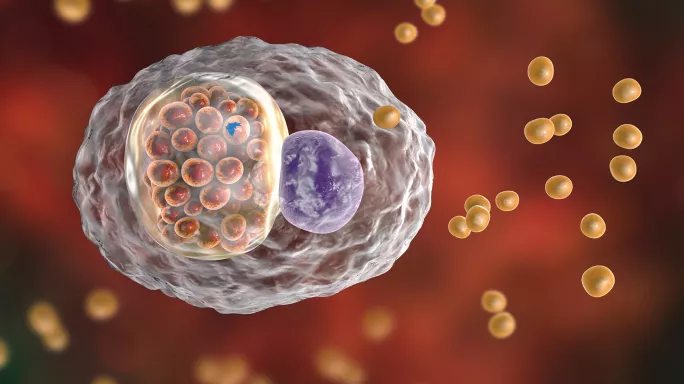What you need to know to teach about STIs

I remember the first time I learned about STIs. I was in Year 8, and the teacher gave us a lecture-style run through of every known STI, with advice on how to recognise them and how they spread. I was utterly terrified that I would catch something.
What they did not tell us was how to get tested, or offer chances for discussion. There were no practical scenarios and signposting to relevant external agencies. We were left scared with nowhere to turn.
Nowadays, there are a number of helpful resources that enable teachers to approach the topic in a positive way. The Do... Programme is a set of exercises, lesson plans and stimulus materials developed with RSE experts. It includes, for example, an excellent self-reflection exercise that takes you through recollections and evaluations to help you identify your knowledge gaps and embarrassment hot spots.
The idea of teaching relationship and sex education may be daunting, but it isn’t a topic that can be avoided. STIs were added to the national science curriculum in 2014 and statutory RSE comes into force in September 2020 - topics to cover include transmission of STIs, reducing risk, the importance of testing, the impact of undetected or untreated STIs, and how to access advice and treatment.
And it’s clearly necessary: reported cases of syphilis increased 20 per cent from 2016 to 2017 (and 148 per cent since 2008), and gonorrhoea cases increased 22 per cent in the same period. Young people (aged 16-24) still experience the highest diagnosis rates of the most common STIs.
The facts about STIs
So let’s start with the basics. First of all, it’s important to use the term STI (sexually transmitted infection) rather than STD (sexually transmitted disease). This shift highlights the nature of infections sometimes not developing into diseases, and sometimes carrying no symptoms or obvious signs of disease. It also has the added benefit of sounding more manageable (to treat and to talk about).
The STI section of this SexWise resource gives a clear, comprehensive breakdown of the facts about symptoms, transmission, prevention and treatment. It even features an option to filter the results by symptom and will work alongside activities like card-matching, quizzes and interactive games that you can devise for your class.
It’s also important to ensure that students know what is not an STI. Sometimes vaginal discharge or vaginal infections are mistaken for STI symptoms. Let them know that normal vaginal discharge contains cervical mucus, which changes texture throughout the menstrual cycle, and that discharge occurs to lubricate the vagina when aroused. These are healthy types of discharge. There are also unusual, discoloured and irritating types of discharge, which can be a sign of thrush or bacterial vaginosis. These conditions are preventable and treatable, and they’re not STIs.

Pupils should be informed that only barrier methods of contraception can stop the transmission of STIs like HIV, chlamydia, syphilis and gonorrhoea, while coils, implants and other types of hormonal contraception will only prevent pregnancy. They should also be aware that STIs like chlamydia and syphilis can sometimes be asymptomatic, but can lead to serious complications if left untreated. Let them know that herpes can be treated but not cured, and infections may reoccur, and that a strain of gonorrhoea has become resistant to once-effective antibiotic treatments.
Misconceptions about STIs
Myth-busting is also a vital part of RSE, as new rumours, hoaxes and memes about STIs are constantly appearing on social media and pupils can, like I did, scare themselves silly. I remember hearing that you could catch gonorrhoea from a toilet seat (you can’t), and I was already teaching PSHE when the ridiculous “blue waffle” rumour went around my students.
Be vigilant in shooting down harmful stereotypes, such as the idea that only gay men get AIDS, or that bisexual people are responsible for transmitting STIs to straight partners. Another unhelpful belief is that only sexually promiscuous people get STIs, which places a value judgement on those who have multiple partners. Keep a watchful eye on any discussions that may imply STIs are a punishment for a person’s gender or sexuality.
It’s essential to include and support LGBTQI+ young people across the curriculum - as Scotland has pledged to do - so ensure that you talk about body parts and behaviour, rather than assigning specific genders to each sexual activity. Say, for example, penetration, oral sex and anal sex, rather than “straight sex” or “gay sex”. Discuss safe use of sex toys as well and remind pupils that these should be washed and used with condoms to prevent the spread of infection.
An open, holistic attitude ensures that pupils will not be overwhelmed, or fall back on an oversimplified yes-or-no stance to using contraception or having sex. Lessons should take a broad approach, including issues such as consent and pleasure; a change in behaviours and thought processes will help students to make healthier choices and feel less anxious about seeking treatment for symptoms or getting tested between partners.
Positive conversations about STIs
Finally, as we approach this year’s World AIDS Day on 1 December, it’s a valuable time to reflect more broadly on the power of open and positive conversations about STIs and other aspects of sexual and reproductive health.
This new resource from the National AIDS Trust is full of up-to-the-minute information on HIV transmission, treatment and prevention, including the key message that effective HIV treatment means people living with HIV can’t pass it on. The resource also includes the latest information on the preventative and post-exposure treatments PREP and PEP, plus lesson ideas for learning about the experiences of people living with HIV and how students can take action on HIV stigma. When I was first learning about STIs, HIV was referred to a “death sentence”. A lot has changed since then, but where this misinformation persists, stigma remains, so it’s vital to tackle it.
Equipping the young people of today with the skills to make decisions about their health and wellbeing will enable them to become the intelligent, compassionate, safe and healthy adults of tomorrow.
Chella Quint is a menstruation education researcher, a former head of PSHE and founder of #periodpositive
